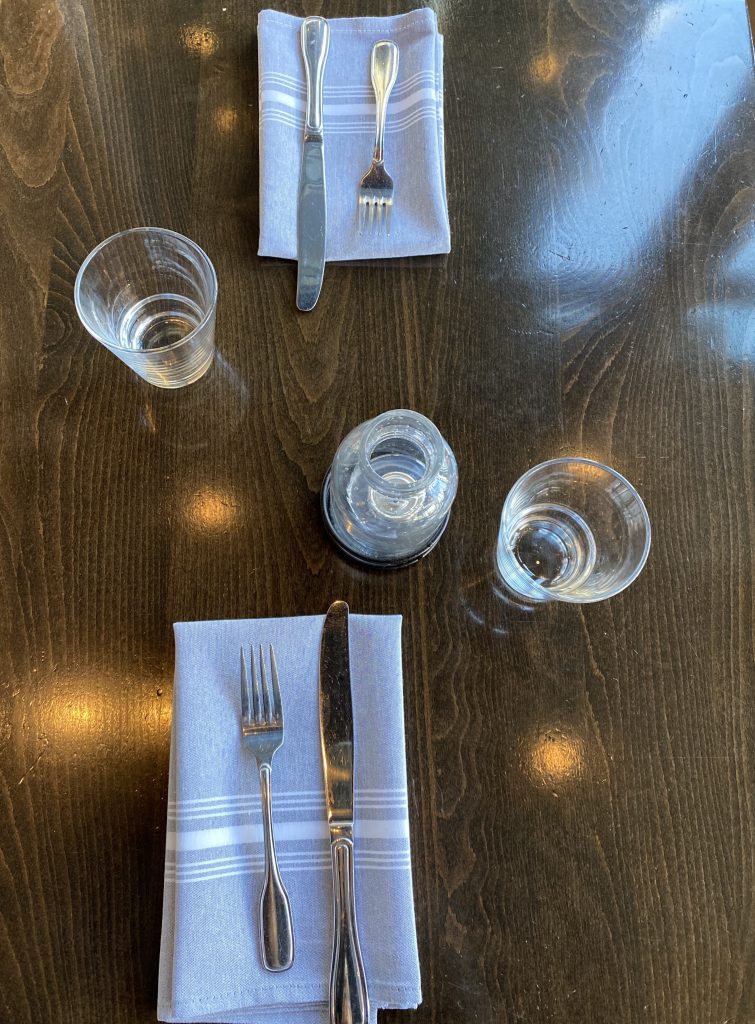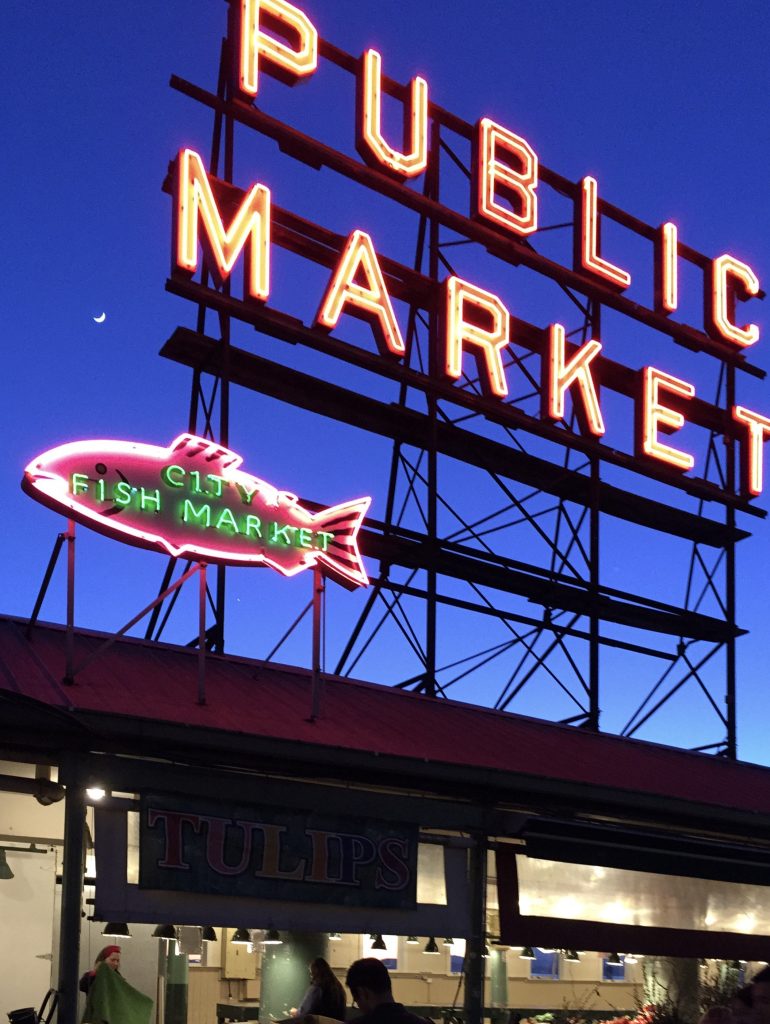
Restaurants, retail and local gathering places in Washington State, across the U.S. and around the world are starting to feel the symptoms of COVID-19 — fewer customers, decreased revenue and interrupted supply chains.
As the number of confirmed coronavirus cases tick upwards, fears of recession and lost opportunity mount. How are we going to cope with this bad news?
How am I going to cope with this unexpected, unprecedented viral outbreak?
I’m a native Seattle-ite and a perennial booster for the Pacific Northwest. I love the natural beauty and the drippy weather complete with puffy white clouds and spongy green moss. I admire the iconoclasts who have settled here — the doers, the dreamers, the inventors who won’t settle for the status quo.
My friends know I love food — all kinds, all ways, all days. I hang out with the farmers, the gatherers, cooks and makers. I support the servers, the promoters and the educators, from the front of the house to behind the scenes, with the up-and-comers and the renowned pros.
Much of my work centers around the food, beverage, hospitality, and retail industries and I’ve spent my career creating and executing strategic marketing plans to help brands grow. I’m a storyteller and creative team leader.
We need to safeguard the health and welfare of our community and enable our economic recovery at the same time.
It is painful to see all that I love thrown into the chaos of uncertainty. I believe we all do better when we all do better.
So what I can do right now, in the face of fear of the unknown, is share my marketing experience, along with tactical ideas for immediate action, with whomever finds it helpful.
My mission is to help us all move forward, finding solutions to the challenges we face, and support each other along the way.
So where do we start?
Don’t panic. Panic and uncertainty can lead to paralysis. Valuable and useable time might be wasted.
Take stock. Now you finally have time to think. What outcomes do you want during the recovery? What does a successful future look like? Maybe today is the day for a vision board for yourself and your business.
Care for yourself, employees, friends, family and community. Doing what you can for your inner circle helps you take small steps and kick-off your action plan. And yes, wash your hands and clean diligently.
Be kind and mindful. Everyone feels the effects of a crisis, some more acutely than others. A daily practice of respect, empathy, active listening and gratitude starts each day with positive intention. Positivity is contagious.
This list of 12 ideas is designed to jump-start your recovery planning and marketing. Making a prioritized to-do list and checking off a few items each day builds the momentum you’ll need to soar when the crisis subsides.
Continue to Market Your Business
- Evaluate your marketing plan. This is a great time to dig into the analytics on your website, the insights on your social media platforms, data from advertising, promotions and PR, plus the results from your direct communications.
- With that data, update your website, send emails, post on social media channels, consider advertising locally and/or online. With fresh insight, you can concentrate your efforts on what has worked before. Now is a great time to experiment with a channel you have been curious about.
- Research has shown that the businesses that invest in marketing during downturns recover faster and stronger than those who cut back. This Forbes article lists some recent examples of accelerated growth by marketing during a downturn.
Communicate
- Explain to your audiences how you’re handling the situation today. Include how you’re caring for your staff. If you have deep relationships with your customers, they care about your employees too, and wish everyone all the best.
- Communicate more, not less. Silence in the face of fear even uncertainty about what to say may be a natural response, but it’s not good business.
- Offer creative solutions for cancellations — switch to virtual events, postpone to a future date, or refund and rebook with empathy and understanding. Customers will remember how your responded to their concerns.
Double Up on Fundamentals
- Clearly understanding all your audiences is critical now. Identify all the people who interact with your business, including super fans, most frequent purchasers, users (who may be different from purchasers), potential customers, business partners and your employees.
- List what matters most to each group. How do your products and services stand apart?
- What products and services are the most popular or most unique? Now is the time to focus on what you do best and pare back the least profitable or least popular offerings from your line-up.
- Focus on cooperation, not competition. Even though there are plenty of other businesses in your industry competing for market share, your business has a unique mix of strengths and specialties, built from your point-of-view. Being generous with your time and knowledge and supportive of your peers builds a powerful community network that will be there for you too when you need it. None of us operates independently and we are part of a greater society, no matter how much distancing is needed at the moment.
Connect
- Reconnect with your customers — now you finally have time to reach out directly to individual supporters and fans for their feedback and suggestions.
- Find out what customers want and create new products and services using their feedback.
- Can you personalize your products and services for your most frequent customers?
- Reach out through social media — create and share appealing content and consider entertaining memes, games and contests, share your favorite recipes. Keep your audiences engaged with you virtually.
- Create, build and invite customers to online community events — live streams, online cooking lessons and demos.
- Share tips and tricks from your daily experience like:
· What to drink with favorite dishes
· Special flavor combos and menu item pairings
· Foods that boost immunity
· Comfort foods
· Easy ways to incorporate your products into a daily meal at home
· Tips on meal prep
· How to help children learn about cooking
- Offer real, useful information that customers will want to share with others, rather than a non-stop fountain of sales messages.
- Partner with like-minded businesses to deliver more, faster. You’re not alone, brainstorming with others will build confidence and generate good ideas.
- Reach out to local media and influencers. Keep the publishing community up to date on what you’re doing because they are always looking to share what’s new, what’s fun, and what’s special with their readers and viewers.

Freshen Up
- Use any down time for a deep clean, a minor remodel, fresh paint, flowers — whatever makes the place look fresh and feel welcoming.
- Train yourself and your staff on new skills — online learning may be an easy, accessible option.
Retool your Product Line and/or Delivery Channels
- Help customers stock up — can customers freeze your products for later use, or can you offer meals that can be finished and heated at home?
- Think about other ways to deliver products — can your restaurant pivot to more catering/take-out? Are delivery options available? Can you develop a menu to emphasize those take-home or delivery items?
- Can you create a special neighborhood menu for employees of local businesses facing the same situation?
- Now is a good time to look at pricing and make adjustments. Is your menu or product line priced competitively?
- Could you try new strategies to drive traffic — longer happy hours, deals for volume orders, special menu items, product bundles, promotions?
- Make it easy for customers to share what you make as a gift. Special decorations and packaging transform an everyday item into a special gift. Gift cards are gaining popularity with the National Restaurant Association reporting that over 50% of consumers would like to receive a gift card to their favorite restaurant.
- Could you partner with another business to offer a complimentary product like a beverage or a dessert?
Focus on Affordable Quality
- During a time of crisis, people reevaluate what is essential versus what is discretionary.
- Even with tight budgets, people still treat themselves to small affordable pleasures and comforts when they can. What items do you offer that customers find extra comforting or indulgent in a good way? How can you promote these during key sales periods?
- Consumers may postpone larger expenses or purchase larger ticket items less frequently since they are budgeting more carefully. Some may save specifically to purchase a more expensive option for an upcoming special occasion.
- Offering a way for customers to purchase in the future helps both of you. Many retailers have layaway programs; restaurants, hotels and events can borrow this idea too.
- For example, The South Beach Wine and Food Festival in Miami offers a layaway option for ticket purchase. Could you set up a layaway ticket plan for an extra-special event in the future?
Encourage Recommendations
- Focus on the value you offer your audiences at every price point. If customers enjoy what you make, they will come back. Focus on delivering a few things that wow your customers so that they will recommend you to their friends and family.
- Encourage people to recommend and leave reviews of your business if they enjoyed their experience. Monitor reviews on all platforms and respond as quickly as possible to customer concerns and raves.
- Check TripAdvisor, Google (Google My Business is an important tool) and Yelp and update your pages with new content like images, hours, new items and links to your website.
Add Personal Touches
- Personally invite customers back to your business — a personal letter from the owner or management team carries great weight. This message can be reformatted for all communication channels.
- Thank customers for their business with meaningful appreciation such as personalized messages, special menu items, product bundles, special incentives to make a return visit, or incentives to bring a friend.
Plan for the Future
- Create high-visibility events for when the crisis passes. Consider crowd-pleasing, accessible events that make an outing to your location special and engaging. People will welcome social connections as soon as they know it’s safe to gather again. “Social distancing” can only last so long.
- Offer a sneak peek of upcoming seasonal favorites, outdoor dining and other appealing options.
Build Community
- Build community in the neighborhood and band together with complimentary local businesses. For example, if your store or restaurant is in a strip mall or in a city shopping area, are there joint promotions or events that can build awareness and drive traffic to all participants? Could you create a mall passport? A grazing menu or a sidewalk sale? Consider working with the landlord or neighborhood chamber of commerce to amplify the impact.
- Join in and celebrate local community events, and nonprofit activities whenever you can to raise awareness and reinforce your commitment to your community.
- Celebrate local and national holidays with festive menu items — there is a celebration every day of the year.

Capitalize on This Brainstorming
- Apply what you’ve learned going forward, to vacation and holiday planning and predictable dips in the sales cycle.
- Keep trying new marketing ideas, even when sales are improving.
- Share what you’ve learned. Note what worked and what didn’t so you’ll be ready for the next time. We can’t see into the future and we know surprises are coming. Let’s be ready!
Active planning and communicating break the fear and paralysis logjams. Marketing means connecting. Maintaining connection with your key audiences is especially important during this time of “social distancing.”
If I can help you create a marketing plan or put these steps into action, please contact me. I’m ready to jump in.